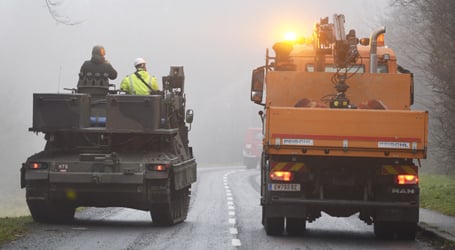The army has been delivering food to homes in Forchenstein-Rosalia, as the community has effectively become cut off from the outside world – with even the fire brigade unable to reach it.
Ice covered trees near to houses are a particular worry as they could fall down at any moment, crushed by the weight of the ice.
Schools have been closed, power lines are down, many homes are without electricity and roads are blocked by fallen trees.
In Lower Austria a state of emergency has been declared in the districts of Horn, Zwettl and Krems with freezing conditions and black ice a danger to life. Twenty schools have been closed and 60 major roads blocked.
Hospital staff are working around the clock with hundreds of people having slipped on ice and injured themselves. The fire service has been called out 1,300 times. Around 500 homes in Lower Austria are still without electricity.
In Styria 600 households are without electricity, with emergency services on high alert.
The weather forecast for Friday says that the icy conditions will continue, with temperatures rising slightly over the weekend.




 Please whitelist us to continue reading.
Please whitelist us to continue reading.
Member comments